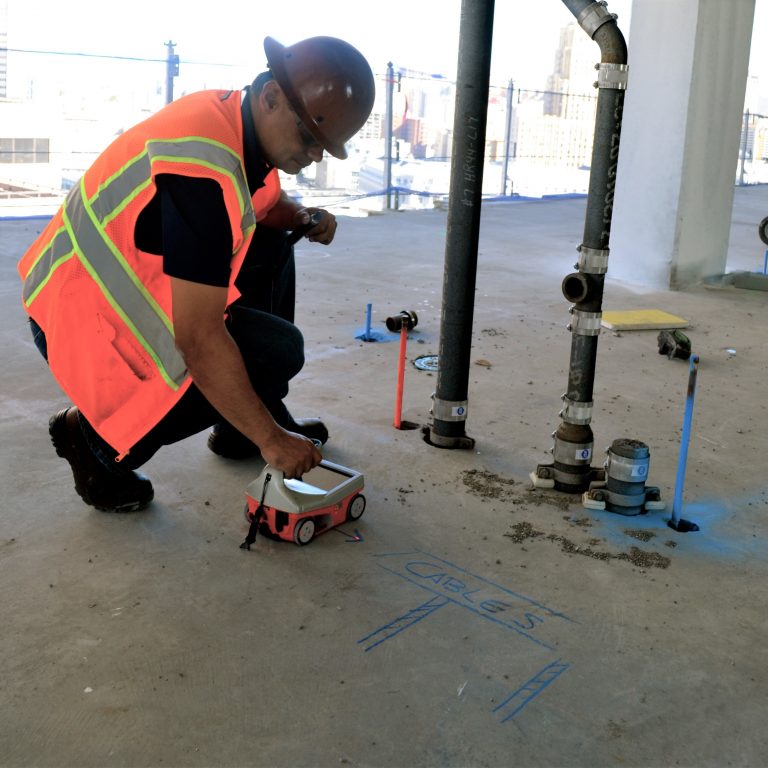Taking Advantage Of Advancement: RainierGPR Concrete Scanning for Accuracy Results
Taking Advantage Of Advancement: RainierGPR Concrete Scanning for Accuracy Results
Blog Article
Exploring the Depths: A Comprehensive Overview to Concrete Scanning and Its Diverse Applications
In the world of building and construction and framework advancement, the precise procedure of concrete scanning holds a critical role in making certain the structural integrity and safety and security of projects. As modern technology remains to evolve, the applications of concrete scanning have actually expanded far beyond mere surface-level assessments. From spotting rebar and post-tension cables to drawing up voids and conduits concealed within concrete structures, the capabilities of modern-day scanning methods are both impressive and necessary. Nevertheless, the true deepness of concrete scanning's prospective reaches even better, branching into unforeseen fields and stimulating innovative options. The interconnected internet of possibilities that concrete scanning provides is not just remarkable but additionally critical for the improvement of numerous sectors.
Relevance of Concrete Scanning
Recognizing the relevance of concrete scanning is vital in guaranteeing the security and stability of structures throughout building and renovation projects. Concrete scanning utilizes innovative innovations such as ground-penetrating radar (GPR) and electro-magnetic induction to identify ingrained items, voids, or various other anomalies within concrete frameworks.
Furthermore, concrete scanning plays an essential duty in making sure conformity with building ordinance and policies that mandate the protection of existing architectural parts during building and construction activities. By properly drawing up the internal make-up of concrete, scanning innovations make it possible for building experts to make enlightened decisions that promote the structural security and toughness of buildings and facilities tasks. Essentially, the value of concrete scanning hinges on its ability to secure both the architectural stability and the personnel associated with construction undertakings.
Technologies Utilized in Concrete Scanning
Concrete scanning relies upon innovative technologies such as ground-penetrating radar (GPR) and electromagnetic induction to precisely spot ingrained objects and anomalies within concrete structures. Ground-penetrating radar operates by sending out high-frequency electro-magnetic waves right into the concrete. When these waves encounter different products or voids within the concrete, they recuperate to the surface area, enabling the GPR system to develop an in-depth subsurface picture. This innovation is especially reliable in situating rebar, post-tension cable televisions, channels, and other items embedded in concrete.
Electro-magnetic induction, on the various other hand, works by producing electro-magnetic fields around a concrete structure with a transmitter coil. When steel items are present within the concrete, they interrupt these magnetic fields, causing eddy currents to flow via the metal. By measuring the modifications in the electromagnetic fields with a receiver coil, the system can identify the area of metal items in the concrete.
These cutting-edge innovations play a critical duty in non-destructive testing, guaranteeing the security and stability of concrete structures in numerous markets.
Applications in Building Market
Within the construction sector, concrete scanning innovation discovers diverse applications that improve job performance and safety and security. In addition, concrete scanning is made use of for locating spaces, such as air pockets or areas of wear and tear within concrete, which can jeopardize the over at this website overall strength of a structure. Concrete scanning plays an important role in high quality control by verifying the density of concrete covers over reinforcement, ensuring conformity with layout requirements and requirements.

Safety And Security Benefits of Concrete Scanning
In the realm of construction security, the execution of concrete scanning technology provides a critical benefit in preemptively identifying prospective threats and fortifying structural honesty. By utilizing sophisticated scanning approaches such as ground-penetrating radar (GPR) and electromagnetic induction, building groups can precisely locate rebar, post-tension cable televisions, avenues, and other surprise things within concrete structures. This aggressive strategy substantially minimizes the threat of accidental strikes throughout drilling, cutting, or coring activities, consequently protecting against expensive damages, injuries, and job hold-ups.
Additionally, concrete scanning improves employee safety and security by providing real-time details regarding the structural problem of concrete aspects. By resolving possible security concerns immediately, concrete scanning contributes to creating a protected functioning atmosphere and minimizing the probability of architectural failures or crashes on building and construction websites.
Future Patterns in Concrete Scanning
Emerging innovations in scanning modern technology are positioned to revolutionize the field of concrete assessment and evaluation. By harnessing the click to find out more power of AI, these systems can evaluate vast amounts of data gathered during scanning procedures to give even more accurate and detailed understandings into the condition of concrete structures.
Another significant trend is the advancement of more mobile and straightforward scanning tools. Miniaturization of scanning devices permits for much easier accessibility to restricted rooms and remote locations, making inspections more efficient and detailed. In addition, advancements in cordless interaction innovations allow real-time data transfer and analysis, facilitating quicker decision-making procedures.
Moreover, there is a growing focus on sustainability in concrete scanning technologies - RainierGPR Concrete Scanning. Manufacturers are progressively including eco-friendly products and energy-efficient functions into their tools to decrease environmental influence. These future patterns are readied to enhance the efficiency, accuracy, and sustainability of concrete scanning techniques, shaping the industry's future landscape
Verdict
In conclusion, concrete scanning plays a critical function in the building market by ensuring the security and performance of various jobs. As innovation breakthroughs, the future of concrete scanning holds appealing growths for improving construction procedures.

Report this page